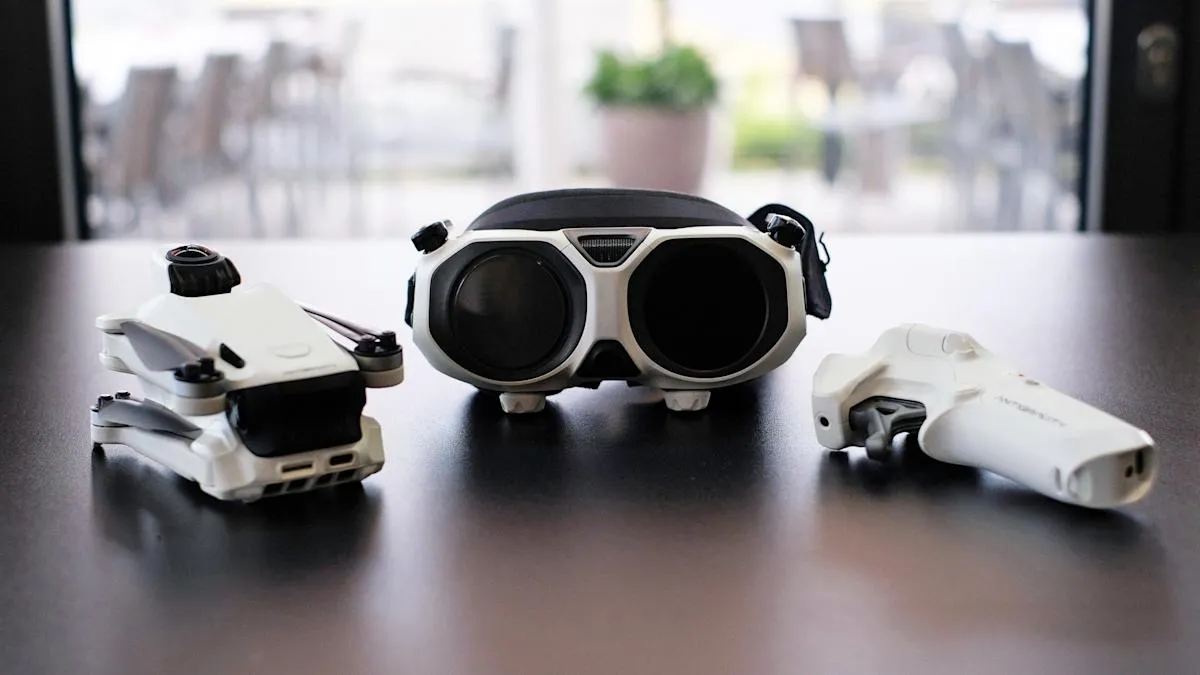
If DJI is making waves in the 360-degree action camera market, it raises an intriguing question: why shouldn’t Insta360 explore the realm of drones? This thought crossed my mind when the company unveiled its inaugural drone, the Antigravity A1, developed by a spin-off brand and team. So, what exactly is the A1? Is it an entry-level device designed for creators seeking to enhance their videos without extensive experience? Or is it a competitive POV drone? The A1 embodies all these facets and more, but it’s essential to note that it is not just a drone.
The Antigravity A1 is set to launch as part of a comprehensive three-part package, which includes the flying unit, OLED Vision goggles, and a dedicated Grip motion controller. Weighing in at approximately 249 grams (8.8 ounces), this drone cleverly sidesteps drone licensing regulations in many areas. It's important to mention that since this is a preproduction model, specifications may vary slightly by the time it reaches retail shelves.
Distinctively, the A1 is outfitted with two ultrawide cameras positioned on its roof and underside rather than the front. These cameras resemble a protective cocoon for the A1, akin to the Insta360 X5 camera. With these dual camera units, the A1 can capture stunning video in 8K resolution, offering a sphere-like perspective from the drone’s vantage point. Thanks to advanced stitching algorithms fine-tuned over five generations of 360-degree cameras, users can expect seamless footage, where the drone itself remains invisible in the frame—similar to the brand's “invisible” selfie stick, but elevated to new heights.
My hands-on experience with the pre-production unit occurred at a Mercedes-Benz race track in Schlüsselfeld, Germany, surrounded by high-speed cars and challenging conditions. As someone who dabbles in drones, I quickly realized that Antigravity's A1 delivers a unique experience right from the start. Controlling the A1 involves wearing the companion goggles and steering it from a first-person perspective, controller in hand. Unlike traditional FPV drones, the A1 allows for full head movement, providing a more immersive experience.
During an exhilarating 15-minute flight, I found the A1 surprisingly intuitive. With many FPV drones, your view is fixed in the direction of the camera. While competitors like DJI’s Avata allow for some rotation, the A1 streams 360-degree video directly to the goggles, meaning turning your head won’t alter the drone's direction. Instead, you can view your surroundings as the drone flies, making it significantly easier for novice pilots.
The A1's unique controller merges elements from traditional drone controllers and gaming devices like the Wiimote. While physical buttons manage altitude and video recording, the steering employs a point-and-click method. By extending your hand to the right, a reticle appears on the goggles’ display. Pressing the trigger propels the A1 in that direction, a feature dubbed Freemotion control. This design allows users to maintain visual awareness while navigating, enhancing the flying experience.
For spectators, Insta360 has added an innovative touch: the goggles feature an external screen, allowing onlookers to see the drone's perspective. This addition significantly enhances the viewing experience, eliminating the monotony of watching someone else fly a drone without a visual feed.
Despite being in its preproduction phase, the A1 delivers impressive video quality and versatility for capturing breathtaking action shots. After testing, I received my footage, enabling me to reframe, crop, and reposition the clips seamlessly. This means you could extract different angles from a single 10-second shot, like a tracking shot of a car or a close-up of the drone pilot, showcasing the A1's flexibility.
Insta360 has a history of creating effective editing tools for its cameras, and the same is expected for its inaugural drone. Although the early version of the editing software had its quirks, I found it relatively easy to use once I understood how to anchor keyframes. This feature allows you to tag objects for tracking, making the editing process engaging and enjoyable.
Another notable feature is the payload detection system. While the exact weight limit is still being finalized, the A1 will not take off if it detects an inappropriate payload, a measure designed to mitigate licensing issues. Additionally, the company hinted at future accessories and peripherals to enhance the Antigravity A1 experience, similar to its successful action cameras and gimbals.
As the A1 is still under development, some specifications remain undisclosed. To encourage community involvement, the company is launching a co-creation project, inviting participants to test the pre-production Antigravity A1 in exchange for feedback. Selected contributors may also win a share of a $20,000 prize pool based on their suggestions.
Flying the A1 around the racetrack was one of the most exhilarating experiences I’ve had with a drone in a long time. However, the question remains: how much will this innovative flight experience cost? The pricing will ultimately determine whether Insta360’s Antigravity A1 can carve out a niche alongside the established DJI drones.